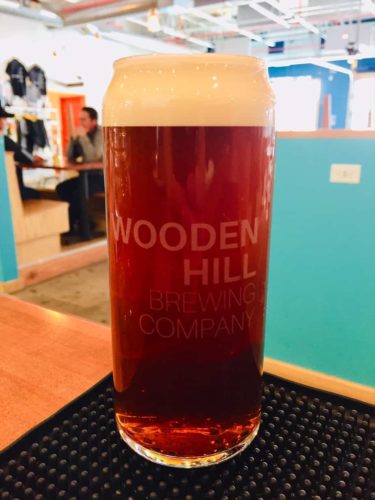The Nitro Revelation
Author: James Ewen, Head Brewer & Co-Owner
If you’re familiar with the craft beer world (and let’s be honest, you’re reading a blog article on a craft brewery’s website so yeah, you’re familiar) and have visited a few taprooms, you’ve definitely seen or even tried a beer “on nitro.”
And perhaps, while watching the beer cascade in the freshly poured glass and sipping the somewhat flat but delicious ale from underneath a firm cap of creamy foam, you’ve pondered, in addition to life’s big questions, “What is nitro, anyway?”

Like every question that comes up about beer—and speaking as someone who fields a slightly higher number of those inquiries than the average person—the answer is never as quick and straightforward as the question. And, if you really get me on a roll, I hope you’ve got a beer in your hand and some time to kill. That’s because the answer here is many things and tracks its origins deep in the history of beer.
Nitro is a gas blend, a draft system, a difference in flavor, and for Guinness in the late 1950s, a unique solution to an expensive problem.
Employing a team of scientists—and fair warning, we are about to venture into ‘sciency’ territory here—Guinness needed to figure out a way to extend shelf life and create a foolproof method of dispensing their beer at pubs. Up until this point, beer served in pubs had been delivered in wooden barrels or early versions of the metal keg and either gravity fed or pumped using a beer engine (hand pump). This process allowed the beer to flatten and also exposed it to oxygen, which caused spoilage within a few days.
Beer served in this way is often referred to as ‘cask ale’ or ‘real ale’ (and by the way, they’ve solved the spoilage issue since then, so never turn down a chance at a pint of real ale). Michael Ash, the head of the team tasked with finding a solution, turned to nitrogen gas to solve the problem.
Nitrogen makes up about three quarters of the air we breathe. It’s inert and, unlike oxygen, won’t spoil beer, even after extended contact. By blending nitrogen and carbon dioxide (which, of course, was always found in beer as a by product of fermentation) at about a 70%/30% rate and pushing the beer through a special faucet affixed with a restrictor plate at a high pressure, the resulting pour cascaded and settled looking very similar to the traditional cask ale.
This process creates a much finer foam than CO2, and also mutes hoppy and bitter/astringent flavor. The difference between our Chocolate Crow wheat stout on nitro and on CO2 is pretty remarkable. The nitro pour blocks the very bitter coffee and chocolate notes from the dark malt and brings out a wonderful creaminess. There is, however, a caveat here: a perfect nitro pour is tough to get right.
After years of experimenting with homebrew and full-scale production batches, I’ve come to the conclusion that there’s a little bit more to the secret sauce that creates the perfect nitro pour. The real issue is that nitrogen doesn’t like to infuse into beer the way CO2 does.
Just as questions about beer have a multitude of answers, issues with beer often have a number of solutions (sometimes solutions which involve standing in a sub 40 degree cooler and shaking a keg for ten minutes while questioning your life decisions). After working through different solutions over the past year and liking the results, but always continuing the search for the perfect pint, we’ve decided on a new approach.
After getting advice from another fellow Head Brewer about a new type of nitro beer dispensing system, we took a chance on purchasing and installing the Cellarstream beer dispense system. The Cellarstream allows uncarbonated beer to be infused with nitrogen, one pint at a time.

The result is a perfect nitro pour, every time. We’re pretty excited about this, so excited that I brewed up a new beer to debut with it: London Calling, a take on the classic dark mild style.
Stop on in and grab a pint, venture beneath the foam, and ponder how it must have felt to revolutionize draft beer all those years ago.AC Be
Sources and more information:
- AC Beverage Inc.
- All About Beer Magazine, “The Man Who Invented Nitro” by Jeff Alworth,
- Beverage Journal, “The Evolution of Beer Packing”
- Guinness.
